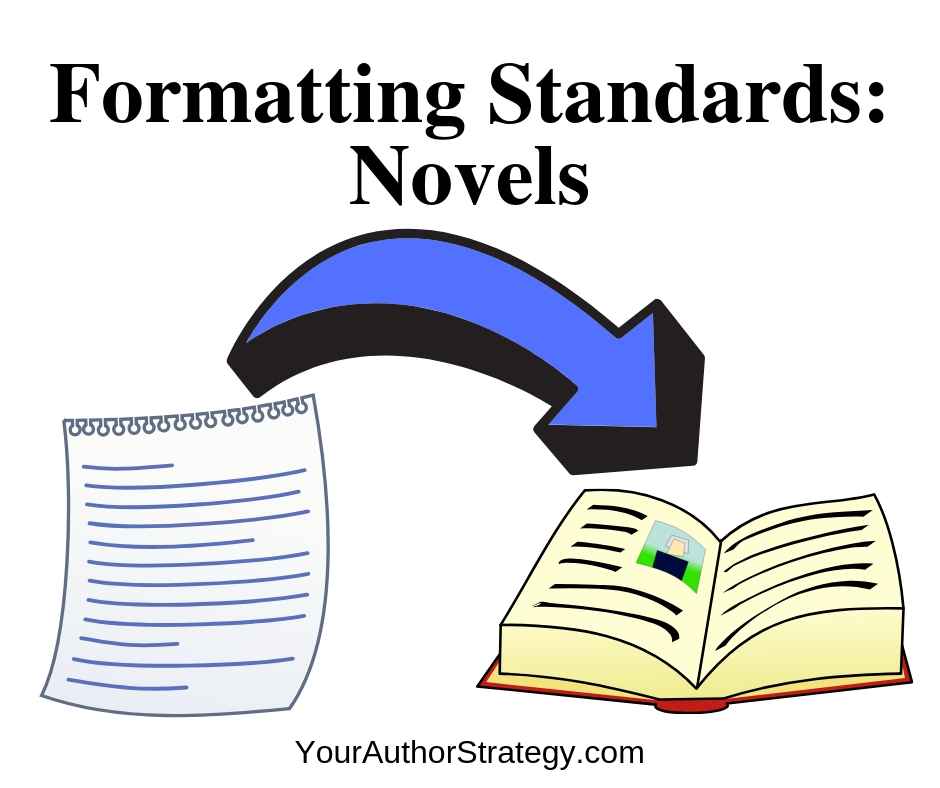Congratulations on writing your manuscript!
Before you submit your document to an agent, editor, or publisher, ensure it adheres to their formatting and content guidelines. If those guidelines aren’t posted, refer to this collection of publishing industry standards.
Grab this FREE, downloadable pdf for easy reference.
Formatting Standards for Novels
- use a readable font: Times New Roman, Courier, or Ariel
- use a title page unless otherwise specified
- don’t number your title page as page 1
- use 12-point text size
- use the word processor’s tools to create the necessary formatting, not hitting “space” on the space bar, multiple tabs, or your return carriage (this messes up formatting down the line). Use “page break” to being new chapters on a separate page.
- ensure a 1 inch (3 cm) margin on all four sides of the document
- title page contains:
- your agent’s name (if you have one) and contact information in the top left corner, left justified
- centered in top 2/3 of page (lower than agent info): manuscript title in capitals (and you may choose a slightly larger font), the word “by” on a new line, your pen name on a new line your pen name, and word count to the nearest 100, 1000, or 5000 words, as is appropriate for the market on a new line
- your contact information (include email, phone, and website) in bottom 1/3 of page, right-justified
- some sources suggest that you include the copyright details on the title page at the bottom, centered, but if you own the intellectual property, this may be a moot point
- if no title page requested, put your legal name, agent, contact information and word count in left justified upper 1/3 of first page unless otherwise indicated
- include any additional requested information from the publisher in your title page (e.g. professional memberships). A publisher may request these as part of the body of an email submission, but not in the document itself.
- use headers on every page: your last name, a key word of the title of book in capitals, page number
- only include the text of the story for submission (i.e. no author’s note, dedications, epigraphs, etc.)
- start each chapter with the title centered 2/3 of the way down a new page
- the first letter of the words in chapter titles should be capitalized, or in full capitals, depending on the publisher’s preference
- double-space lines of text in the body of your manuscript
- leave the equivalent of two lines between chapter titles and the body text
- format the first paragraph of a section or scene to the left
- Indent all other paragraphs by 0.5 inches (or 1.25 cm)
- align all text to left
- don’t put extra spaces between paragraphs
- use a single space after a period at the end of a sentence
- use italics instead of underlining for italicized words
- break scenes with a # centered in the middle of its own line
- submit hard copies on white 8.5″ x 11″ paper (in the U.K. the standard is often A4 paper)
- don’t add perfumes, glitter, fancy fonts, or pizza to your physical submission
- at the end of your manuscript, add a # or the words, “The End,” centered after a doubled-spaced blank line to indicate that there are no more pages to follow.
Good Luck!
Be sure you send your manuscript in the requested file format for electronic submission! Often this is .doc or .docx.
A word of caution: if you choose not to follow the publisher’s specifications, don’t be surprised if your well-written novel doesn’t make it past the slush pile. If you receive a request to re-format for word count or layout, arguing the point won’t win the publisher over. You’ll have far better success if you adapt to the publishing standard and guidelines than if you insist on being right!

